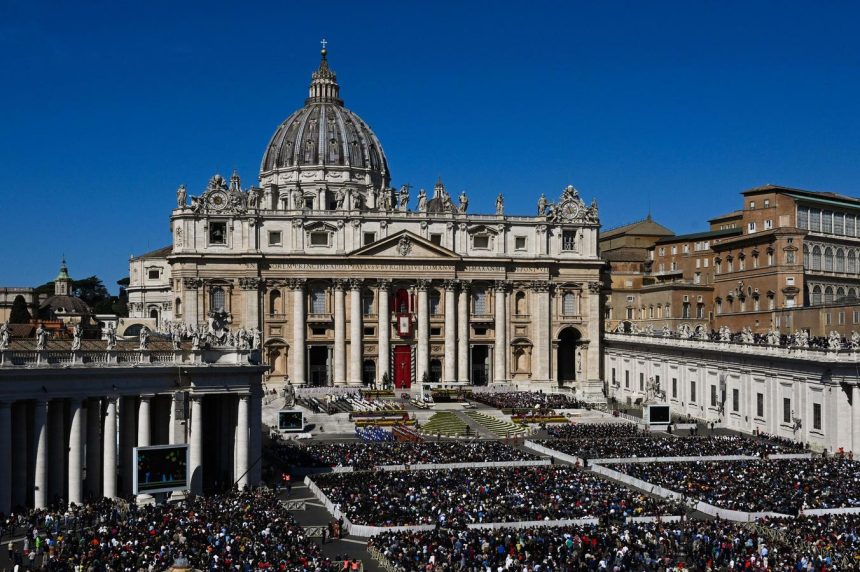The Vatican’s recent foray into the burgeoning field of artificial intelligence (AI), titled “Antiqua et Nova,” offers a profound reflection on the evolving relationship between humanity and technology. Far from a Luddite rejection of scientific progress, the document, endorsed by key Vatican figures, embraces the potential of AI while simultaneously urging caution and ethical consideration. It grounds its perspective in core Catholic doctrines, emphasizing human dignity, inherent worth, and the importance of relational intelligence in navigating this technological frontier.
The document begins by acknowledging the Church’s consistent support for scientific advancement, viewing such endeavors as a collaborative effort between humanity and God to perfect creation. However, the rapid advancements in AI, particularly its ability to mimic and even surpass human creativity, necessitate a deeper examination of its implications. The authors highlight the potential of AI to exacerbate the existing “crisis of truth” in the public sphere, given its capacity to generate convincing yet potentially misleading content. Moreover, the increasing autonomy of AI systems raises critical questions about ethical responsibility, human safety, and the very definition of what it means to be human in an age of intelligent machines.
“Antiqua et Nova” delves into the historical context of AI, referencing seminal events like the 1956 Dartmouth conference and Alan Turing’s influential work. The authors acknowledge the increasing reliance on AI for tasks previously performed exclusively by humans, foreshadowing the potential emergence of artificial general intelligence and superintelligence. This trajectory underscores the urgency of establishing ethical frameworks to guide the development and deployment of these transformative technologies. The document emphasizes the distinction between human reason, characterized by inquisitive and discursive processes, and intellect, described as an inward grasp of truth. This distinction highlights the unique nature of human cognition, which is deeply intertwined with embodied experience and relationality.
The Vatican’s perspective stresses the importance of viewing AI through the lens of human dignity and relational intelligence. It cautions against the potential for AI to erode privacy, exacerbate existing inequalities, and even reshape human relationships in detrimental ways. The document expresses particular concern about the anthropomorphization of AI, particularly by children, warning that such interactions could foster transactional rather than empathetic relationships. This could undermine the development of genuine human connection, which is essential for individual and societal flourishing.
The document specifically addresses the application of AI in various sectors, including labor, healthcare, education, and warfare. While acknowledging the potential benefits of AI in these areas, the authors underscore the need for careful consideration of ethical implications. In the labor market, for instance, AI could displace human workers, leading to unemployment and economic hardship. In healthcare, while AI could improve diagnostic accuracy and treatment efficacy, it also raises concerns about data privacy and the potential for algorithmic bias. In education, the use of AI-powered tools could personalize learning experiences, but it also risks reducing the role of teachers to mere dispensers of information, neglecting the crucial mentorship aspect of education. Finally, the application of AI in warfare raises profound ethical dilemmas regarding autonomous weapons systems and the potential for unintended consequences.
“Antiqua et Nova” concludes with a call to embrace humanism and resist the allure of “digital reductionism,” which reduces human value to quantifiable metrics. Quoting French Catholic author Georges Bernanos, the document warns against the danger of becoming accustomed to desiring only what machines can provide. The Vatican’s message emphasizes the interconnectedness of individuals and communities and advocates for a shared responsibility in fostering the integral well-being of others. This relational intelligence, rooted in empathy and a commitment to the common good, is presented as a crucial framework for navigating the complex ethical landscape of artificial intelligence.
The Vatican’s perspective on AI is not merely a moral exhortation but a considered engagement with the philosophical and societal implications of this transformative technology. It recognizes that the advent of AI requires a fundamental shift in our understanding of human existence and our relationship with technology. The document underscores the need for ongoing dialogue and collaboration between religious leaders, scientists, policymakers, and the broader public to ensure that AI serves humanity and promotes the flourishing of all. It emphasizes that AI should be a tool for human advancement, not a replacement for human connection, creativity, and ethical decision-making.
The core argument of “Antiqua et Nova” revolves around preserving the unique value and dignity of human beings in the face of rapidly evolving AI capabilities. It stresses that AI, however sophisticated, remains a human creation and should be treated as such. The document cautions against ascribing human-like qualities to AI systems, as this can lead to misplaced trust and a diminished appreciation for genuine human relationships. The emphasis on relational intelligence underscores the importance of human connection, empathy, and a shared commitment to the common good as essential elements for navigating the ethical challenges posed by AI.
The Vatican’s intervention in the AI discourse provides a valuable ethical framework for engaging with these transformative technologies. It challenges us to consider not just the technical capabilities of AI but also its impact on human values, relationships, and the very fabric of society. The call for a “framework of relational intelligence” serves as a reminder that technological progress should be guided by ethical principles that prioritize human flourishing and the common good. This perspective offers a crucial counterpoint to the often-dominant narrative of technological determinism, reminding us that we have the power to shape the future of AI in ways that align with our deepest human values.
The document further emphasizes the need for continuous reflection and adaptation in the face of ongoing advancements in AI. It acknowledges that the ethical challenges posed by AI are not static but will continue to evolve as the technology itself develops. This calls for ongoing dialogue and collaboration between diverse stakeholders to ensure that ethical considerations remain central to the development and deployment of AI. The Vatican’s contribution to this conversation underscores the importance of incorporating diverse perspectives, including religious and philosophical viewpoints, in shaping the future of AI.
“Antiqua et Nova” highlights the potential for AI to both exacerbate existing societal challenges and offer solutions to pressing global problems. The document cautions against the potential for AI to deepen inequalities, erode privacy, and displace human workers. At the same time, it acknowledges the potential benefits of AI in areas such as healthcare, education, and environmental sustainability. The Vatican’s perspective calls for a nuanced approach to AI development, one that carefully considers both the potential risks and rewards and strives to maximize the benefits while mitigating the harms.
The document’s emphasis on human dignity and relational intelligence provides a crucial ethical compass for navigating the complexities of AI. It reminds us that technological progress should not come at the expense of human values and that the ultimate goal of AI development should be to enhance human flourishing and promote the common good. The Vatican’s intervention in the AI discourse serves as a valuable reminder that technological advancements should be guided by ethical principles that prioritize human well-being, social justice, and the preservation of our shared humanity.
Finally, “Antiqua et Nova” serves as a call to action, urging individuals, communities, and institutions to engage actively in shaping the future of AI. It emphasizes the importance of informed public discourse, ethical guidelines, and responsible technological development. The Vatican’s message encourages us to view AI not as an autonomous force but as a tool that can be used for good or ill, depending on the choices we make today. The document’s emphasis on human agency underscores the power we have to shape the future of AI in ways that align with our shared human values and aspirations.



